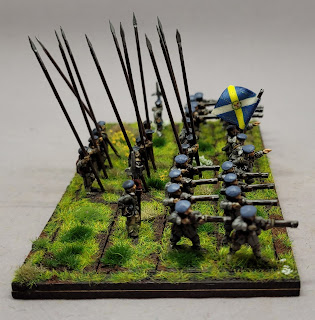Houses of Interest: Leicestershire
The Civil Wars in Leicestershire are overshadowed by events leading upto, and after the Battle of Naseby just over the border in Northamptonshire.
For more Leicestershire Civil War locations see the storming of Leicester (coming soon), Market Harborough's role after Naseby, and Belvoir Castle.
Kirby Bellars, the remains of this C14th moated manor house were reinforced with earthworks to provide protection for its Parliamentarian garrison. The garrison deserted the site after the fall of Leicester. Marked on the OS map as 'moat' it is best viewed on satellite mapping apps. More hardy souls might want to take the footpath from 36 Main Street westwards that curves round to the south to meet Leicester Road.
 |
| 1620s House |
Slightly before 'our' period the 1620s House and Gardens at Donington le Heath gives a fascinating insight into how people lived during the troubled times. Excellent tea rooms (the menu is not C17th themed).
The original Tudor manor of Coleorton Hall was garrisoned by Parliament, providing a useful offensive position blockading Ashby de la Zouch. The Tudor mansion was demolished and rebuilt by the Victorians. Coleorton has been 'developed' into apartments, and there is no public access to the building.
Ashby de la Zouch was a significant Royalist garrison, governed by Henry Hastings, later 1st Baron Loughborough. Ashby de la Zouch Castle was significantly refortified, so good were the defences that local Parliamentarian command decided upon a course of containment rather than attempting to take the castle. The Royalist garrison made a nuisance of itself, so much so that the locals let out a great sigh of relief when the Castle eventually surrendered in February 1646. The castle would be sleighted in 1648 with the outbreak of fresh hostilities.
The Castle ruins are cared for by English Heritage, so it is obligatory that the site has a tea room and shop.
Melton Mowbray, a site of pilgrimage for lovers of the pork pie, was garrisoned by Parliament. The garrison was constantly harried by the Royalist troops from Newark and Belvoir Castle. The most significant incursion being November 1643 when 300 men of the garrison were captured. In Februrary Marmaduke Langdale led a sizeable Royalist force against the town, and battle commenced. Local legend has the site of the battle as Ankle Hill, as the fighting was so fierce that the hill ran ankle deep in blood; alas Victorian hyperbole strikes again, the name predates the Wars, and moves location depending upon the whim of cartographers (in other words we have no idea where the battle was fought, other than it was on a hillside).
A rather grand house, The Limes, stood on Sherrard Street. Home to Sir Henry Hudson, there was much celebration at the end of the First Civil War outside the house. The house was demolished in the 1920s, and is now roughly the site of a supermarket.
St Mary's Church dates from the C12th and is one of the few buildings in the town, still standing, that will have witnessed the events of the Wars.
The Battle of Bosworth. No not that one. A skirmish that took place on the 1st July 1644, where Parliament's men saw off the Royalists, "in the very place where King Richard was slain" (letter by Thomas Fairfax). Bit of a problem, as the location of the battlefield is hotly debated. the most likely location, proposed by Glen Foard and Ann Curry (on behalf of the Battlefields Trust), puts the battlefield roughly around Fenn Lane Farm on Fenn Lane. |
| The Old Manor, Loughborough |
Postcodes for SatNavs
Footpath to Kirby Bellars, 36 Main Street, Kirby Bellars LE14 2EA
Kirby Bellars OS grid SK719174
1620s House and Gardens at Donington le Heath, Manor Road, Coalville LE67 2FW













If I didn't know better Mike, I'd say your interest in the British Civil Wars is a smokescreen for a tour of all the tea rooms in the country! Excellent work as ever.
ReplyDeleteAs Penry, the mild mannered janitor, oft said "could be"
DeleteAnd thank you for your kind words
Delete